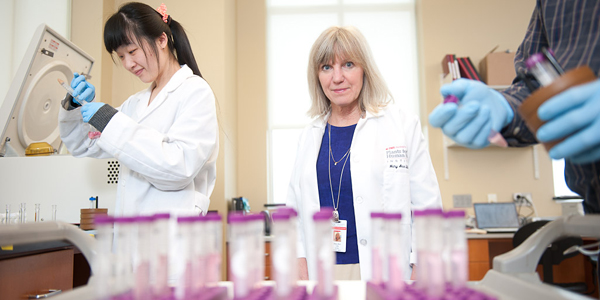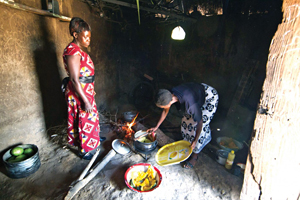A Healthy Harvest

Nearly 8,000 miles, an ocean and seven time zones separate the small town of Kannapolis, N.C. from the heartland of southern Africa. Food scientist Mary Ann Lila knows the distance all too well. She’s visited 17 African countries in the past eight years. But she doesn’t measure the distance solely in miles. The sub-Saharan region is, in many respects, a world away from her high-tech laboratory on the expansive North Carolina Research Campus, just north of Charlotte.
The differences in culture, language and traditions are striking. So too are the economic and health disparities.
In the Republic of Zambia, where half the country’s 14 million citizens live on less than a dollar a day, malnutrition is a persistent problem. UNICEF estimates that 54 percent of children under age 5 in Zambia suffer from stunting, making them susceptible to a variety of preventable diseases and threatening their functional and intellectual capacity well into adulthood.
Lila, who directs NC State’s Plants for Human Health Institute located at the research campus, is combining expertise in plant biology and knowledge of southern Africa to tailor a homegrown solution. The problem, she explains, is Zambia’s climate. During the rainy season, from November to April, villagers grow enough to eat. But during the rest of the year — the dry season — food is scarce.

“They don’t have refrigeration, they don’t have freezers, they don’t have electricity in the rural villages,” she says. “So in the dry season they’re forced to subsist on nshima, a porridge made of corn meal, like grits.”
Though nshima is easy to make and readily available in most homes, the staple lacks the protein and nutrients vital to the healthy development of infants and children. Shipping in meats and produce from Western countries isn’t the answer, Lila says, because villagers in many countries are wary of unfamiliar foods.
In addition, the logistical and economic challenges of delivering food to millions of people across the region are well-nigh insurmountable. But thanks to a grant from the Bill and Melinda Gates Foundation, Lila has teamed up with a local nongovernmental organization to launch a pilot program in three Zambian villages. If the program’s early success is replicated on a larger scale, it could significantly reduce the incidence of chronic malnutrition in many African countries.
Her idea is simple: teach villagers how to use some of the crops they harvest during the rainy season to create a shelf-stable protein powder. Then, in the dry season, the powder can be easily added to nshima to boost its nutritional value. The only equipment villagers would need is a low-cost, solar-powered dehydrator.
“It doesn’t take much,” Lila says. “It’s a simple process, so they can make it right in the village. That’s the key to the whole thing.”
Once that key is turned, it unlocks a myriad of nutrients — protein from soy and peanuts, phytochemicals from fruits and vegetables — that are abundant in the crops Zambians grow during the rainy season.
What’s more, harnessing these naturally occurring plant compounds isn’t just an innovative way to combat malnutrition in Africa; it’s the basis for a wide range of human health advances. Read the complete article.
Read Results Magazine
Lila’s groundbreaking work in food science is just one of the stories you’ll find in the new issue of Results, a print and online magazine published by the Office of Research, Innovation and Economic Development in cooperation with University Communications.


